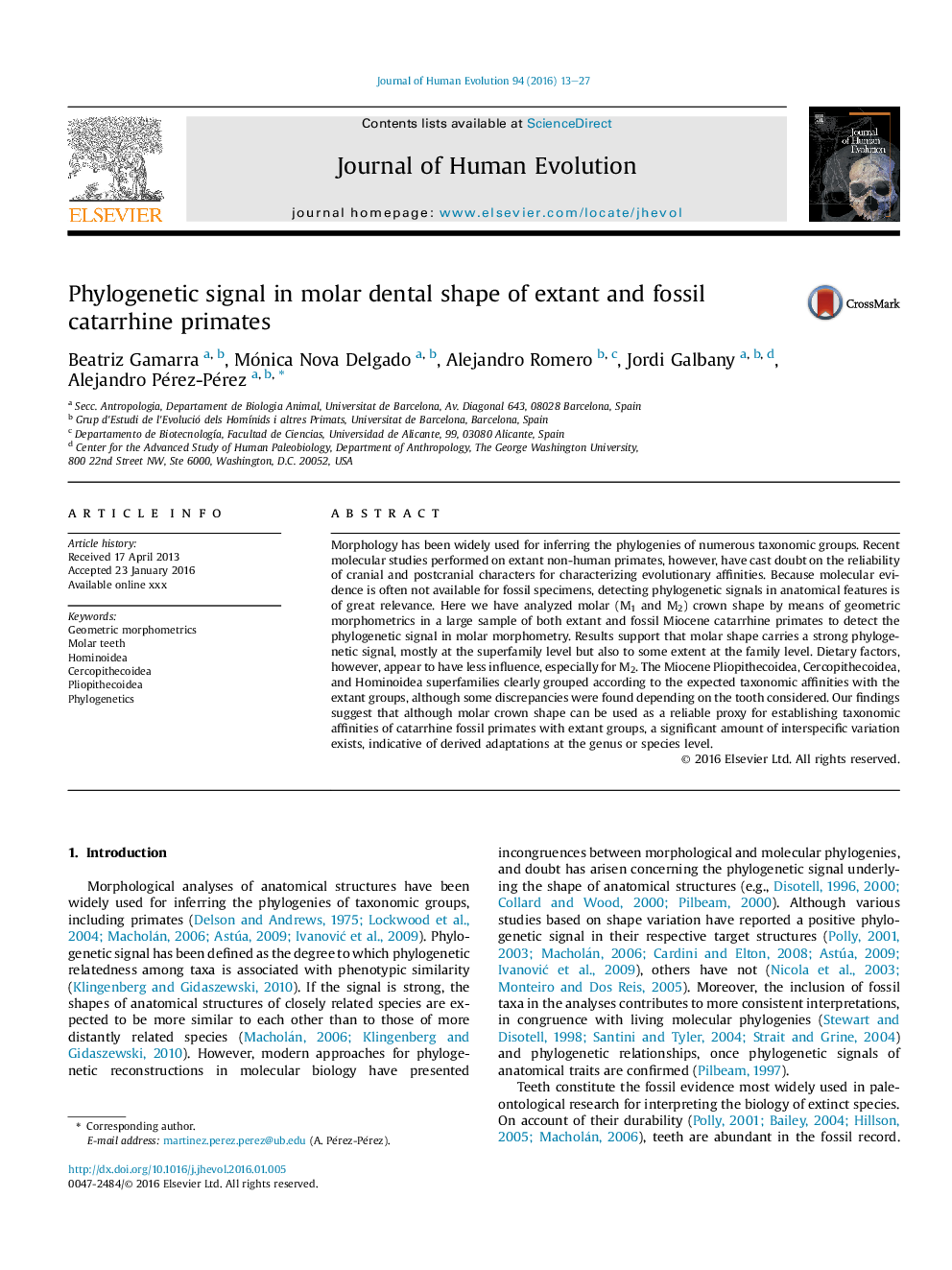| کد مقاله | کد نشریه | سال انتشار | مقاله انگلیسی | نسخه تمام متن |
|---|---|---|---|---|
| 6389094 | 1628155 | 2016 | 15 صفحه PDF | دانلود رایگان |
عنوان انگلیسی مقاله ISI
Phylogenetic signal in molar dental shape of extant and fossil catarrhine primates
ترجمه فارسی عنوان
سیگنال فیلوژنتیک در شکل دندان مولر اولیهای موجود و پرتقال سدرین فسیلی
دانلود مقاله + سفارش ترجمه
دانلود مقاله ISI انگلیسی
رایگان برای ایرانیان
کلمات کلیدی
موضوعات مرتبط
علوم زیستی و بیوفناوری
علوم کشاورزی و بیولوژیک
بوم شناسی، تکامل، رفتار و سامانه شناسی
چکیده انگلیسی
Morphology has been widely used for inferring the phylogenies of numerous taxonomic groups. Recent molecular studies performed on extant non-human primates, however, have cast doubt on the reliability of cranial and postcranial characters for characterizing evolutionary affinities. Because molecular evidence is often not available for fossil specimens, detecting phylogenetic signals in anatomical features is of great relevance. Here we have analyzed molar (M1 and M2) crown shape by means of geometric morphometrics in a large sample of both extant and fossil Miocene catarrhine primates to detect the phylogenetic signal in molar morphometry. Results support that molar shape carries a strong phylogenetic signal, mostly at the superfamily level but also to some extent at the family level. Dietary factors, however, appear to have less influence, especially for M2. The Miocene Pliopithecoidea, Cercopithecoidea, and Hominoidea superfamilies clearly grouped according to the expected taxonomic affinities with the extant groups, although some discrepancies were found depending on the tooth considered. Our findings suggest that although molar crown shape can be used as a reliable proxy for establishing taxonomic affinities of catarrhine fossil primates with extant groups, a significant amount of interspecific variation exists, indicative of derived adaptations at the genus or species level.
ناشر
Database: Elsevier - ScienceDirect (ساینس دایرکت)
Journal: Journal of Human Evolution - Volume 94, May 2016, Pages 13-27
Journal: Journal of Human Evolution - Volume 94, May 2016, Pages 13-27
نویسندگان
Beatriz Gamarra, Mónica Nova Delgado, Alejandro Romero, Jordi Galbany, Alejandro Pérez-Pérez,
